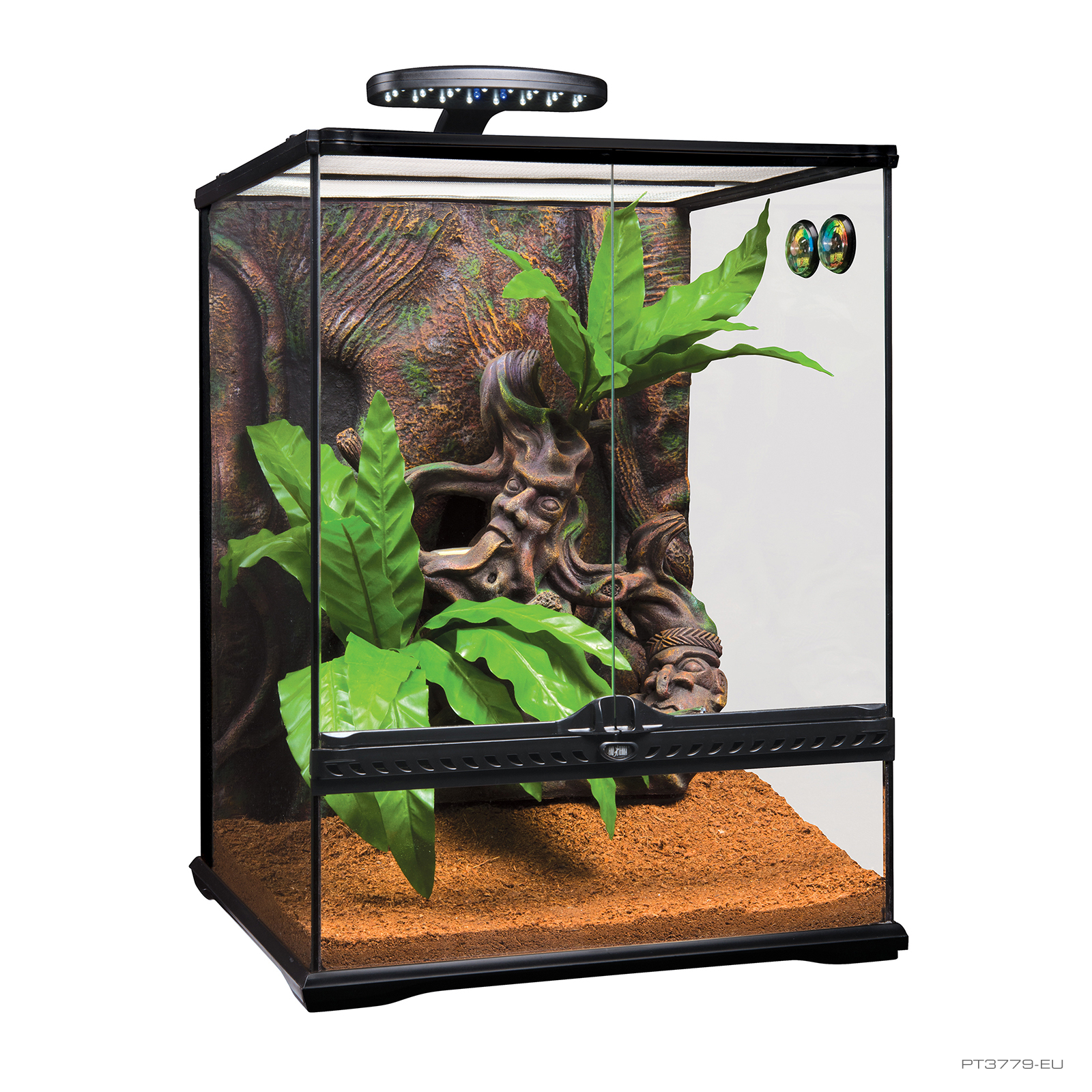As a proud crested gecko owner, I can’t stress enough the importance of creating a cozy and stimulating environment for your pet. Not only does proper decor enhance the aesthetic of your gecko’s habitat, but it also contributes to their well-being and happiness. In this ultimate guide, we’ll explore various elements of crested gecko decor, including plants, substrates, hides, and climbing surfaces.
Why is Decor Important for Crested Geckos?
Crested geckos (Correlophus ciliatus) are arboreal creatures that thrive in complex environments that mimic their natural habitats in New Caledonia. A well-decorated terrarium offers your gecko opportunities for climbing, hiding, and exploring, which are essential for their mental and physical health.
Benefits of a Well-Decorated Habitat

- Encourages Natural Behaviors: A decorated habitat promotes climbing, hiding, and foraging.
- Reduces Stress: Having places to hide helps crested geckos feel secure.
- Aesthetic Pleasure: A beautiful terrarium can enhance the look of your home.
- Easy to Maintain: Proper decor can make cleaning and maintenance simpler.
Choosing the Right Enclosure

Before diving into decor, it’s essential to choose the right enclosure. A larger space allows for more dynamic setups, while a smaller tank limits your decor options.
Recommended Tank Size

| Tank Size | Recommended for |
|---|---|
| 20 gallons | 1-2 Adult Crested Geckos |
| 40 gallons | 3-4 Adult Crested Geckos |
| 75 gallons | Breeding Pairs or Group Housing |
Essential Decor Items for Your Crested Gecko’s Habitat

Now that you’ve got the right enclosure, let’s explore essential decor items to create the ultimate habitat for your crested gecko.
1. Hides and Shelters

Providing hiding spots is crucial for the comfort of your crested gecko. They are nocturnal and like to sleep in dark, secure locations.
Types of Hides

- Caves: Commercially available resin caves or natural pieces provide safe spots.
- Cork Bark: Offers hiding spots and climbing opportunities.
- Live Plants: Certain low-maintenance plants can offer natural shelters.
2. Climbing Structures
Crested geckos are natural climbers, so incorporating vertical space is vital.
Best Climbing Options
- Branches: Use real or synthetic branches for climbing.
- Vines: Both plastic and natural vines can enhance the climbing experience.
- Vertically Placed Driftwood: Provides both climbing and hiding spots.
3. Substrate Choices
The substrate you choose impacts the overall health of your gecko. Here are some popular options:
Substrate Comparison
| Substrate Type | Pros | Cons |
|---|---|---|
| Reptile Carpet | Easy to clean, non-toxic. | Not very naturalistic. |
| Eco Earth | Biodegradable, natural look. | Can retain moisture. |
| Paper Towels | Inexpensive, easy to replace. | Less aesthetic appeal. |
4. Plants: Real vs. Fake
Plants add beauty and help maintain humidity levels. You can choose between live plants or artificial ones.
Live Plants
Some excellent options for live plants include:
- Boston Fern
- Pothos
- Spider Plant
Artificial Plants
These provide similar aesthetic benefits without the upkeep. Choose high-quality plastic plants to avoid harmful chemicals.
Setting Up the Decor
Once you’ve chosen your items, it’s time to set them up!
Creating Layers
Incorporate a variety of heights and surfaces. Place taller climbing structures in the back and shorter hides in the front. This layering makes it easier for your gecko to navigate.
Ensuring Safety
Check all decorations for sharp edges and remove any items that can harm your pet. Use non-toxic materials to ensure a safe environment.
Maintaining the Decor
Regular maintenance is essential to keep your gecko’s habitat clean and safe.
Daily Maintenance Tips
- Check for droppings and remove them promptly.
- Refill fresh water daily and clean the water bowl.
Weekly Cleaning
Every week, spot clean by removing any uneaten food, and wipe down surfaces. A thorough monthly cleaning includes changing the substrate (if applicable) and deep cleaning decorations.
Common Mistakes to Avoid
As you embark on your journey of decorating your crested gecko’s habitat, here are a few common pitfalls to avoid:
- Overcrowding: Avoid cramming too many items into the terrarium.
- Neglecting Humidity: Ensure the habitat maintains adequate humidity levels.
- Ignoring the Temperature Gradient: Create a temperature gradient in the enclosure.
Final Thoughts
Creating the perfect habitat for your crested gecko is a rewarding experience. By carefully selecting and arranging decor, you can enhance their quality of life and enjoy a beautiful display in your home. Remember, your gecko’s health and happiness should always come first!
FAQs
What kind of substrate is best for crested geckos?
The best substrates include eco-friendly options like eco earth or reptile carpet, as they are safe and easy to maintain.
Can I use real plants in a crested gecko tank?
Yes, plants like pothos and spider plants are safe and can help maintain humidity levels.
How often should I clean the terrarium?
Daily spot cleaning is recommended, with deep cleaning and substrate changes performed monthly.
Do crested geckos need heat lamps?
Crested geckos prefer cooler environments, so heat lamps are typically unnecessary. A temperature gradient is more important.